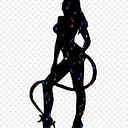Americans are among the most stressed people in this blue ball world, according to a 2018 Gallup poll. While stress may be something you feel emotionally, it can have a significant effect on your physical health. In addition to high blood pressure, headaches and fatigue, skin rashes are general stress signs.
A stress rash is only a rash or problem with your skin triggered by stress and anxiety. A typical stress rash response is breaking out in hives, called as urticaria. These are increased, itchy bumps that show up on the infected area and can appear anywhere on your body. Along with hives, those with existing skin conditions, like rosacea and eczema, can experience more frequent flare-ups.
Stress rash is generl and you and evrybody can get it. Stress induces a chemical response in your body that impacts all yout body parts. Stress rash isn’t a reason for concern and can be treated at home. Stress rash can also happen due to underlying skin conditions, such as rosacea, psoriasis, lichen planus, and eczema. These may require medical management.
Symptoms of Stress Rash
Stress rashes frequently show up as hives, also called as urticaria, which tend to be:
- Itchy: The rash can be itchy, or it could burn or sting.
- Red/blotchy: The welts can also vary in color.
- Swollen/puffy: The skin will swell in areas, and shapes and edges are obvious. Swelling can also happen underneath your skin, which is known as angioedema.
Hives can emerge anywhere on your body. While they may initially begin as tiny red bumps like a typical rash, stress rashes frequently become larger welts or patches that become worse after scratching them.
Personal hives can be as large as dinner plates, but smaller hives can also merge together so that they appear to cover a large part of your body.
Stress rashes frequently appear as raised red bumps known as hives. They can impact any part of your body, but often a stress rash is on your face, neck, chest or arms. Hives may range from tiny dots to large welts and may form in clusters. They may be itchy or trigger a burning or tingling sensation.
